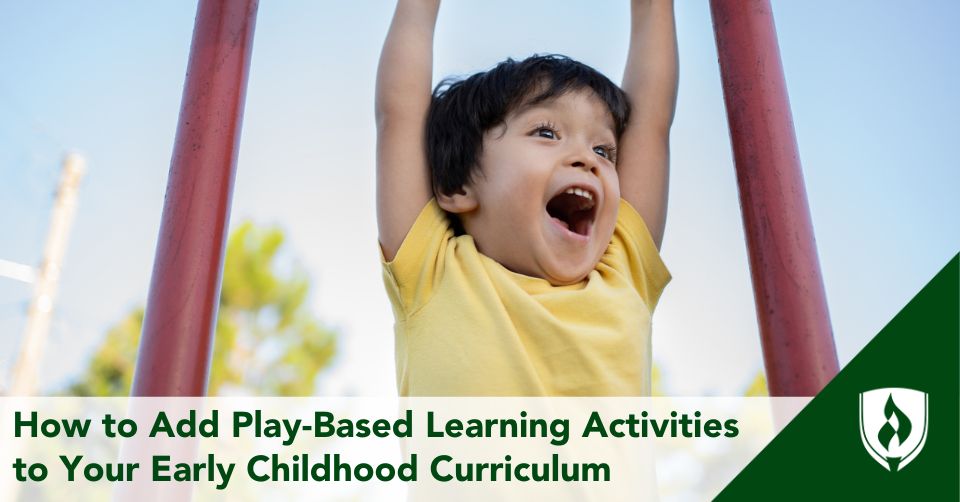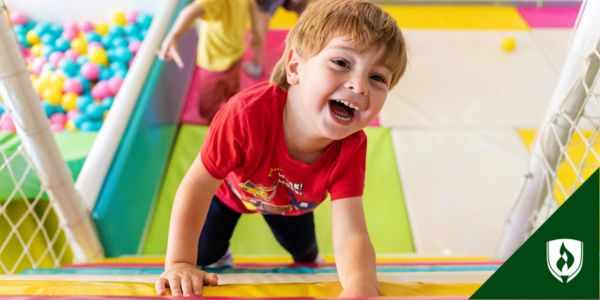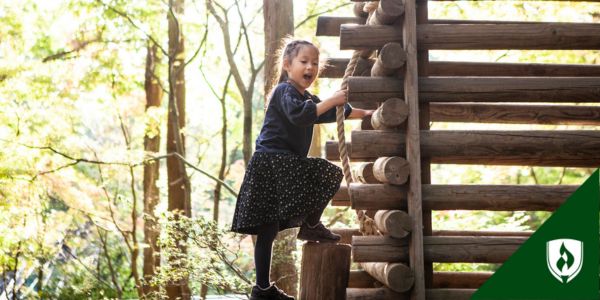How to Add Play-Based Learning Activities to Your Early Childhood Curriculum
By Deidra Boodoo on 10/03/2024

Let's get right to it—Children love to play. Play-based learning activities are an excellent way for preschoolers and toddlers to make sense of their learning.
When early childhood educators combine play with learning, children can absorb more information about their world in a way that appeals to them.
What is play-based learning, and why is it important?
Play-based learning is an approach that encourages teachers to add play materials into the learning environment to teach concepts and process-oriented lessons. The early learning classroom should encourage children to develop basic learning skills or domains such as fine motor development, gross motor development, creativity and self-confidence.
Teachers can help children develop those learning domains using play-based learning environments that encourage active engagement and social interactions. Research shows that play-based learning can add greater value to children's days and extend the learning process for all children.
That's all good in theory. But how do you choose activities? Children will learn from almost anything—but your intentional, thoughtful choices can make a huge difference in how much they gain from what you do!
These learning activities can play an important part in early learning development. Children will learn necessary skills, including fine motor and basic mathematical concepts, and be actively involved in their learning.
This is all just a portion of what early childhood education professionals learn in an Associate's ECE program.
5 Steps to nurture play-based learning
When early childhood educators think about how to incorporate play-based learning into their lessons, they can consider fun interactive activities that promote children's cognitive and social development. To add play-based learning to your curriculum, start with these five straightforward steps.
1. Consider the children’s interests
To find out what children are interested in, teachers must be intentional in their student interactions. Pay attention to the children when they are participating in indoor activities. Preschool children love to use expressive words about things that interest them.
Participate in two-way discussions with them. Ask questions. Find out about the children's weekends.
Listen to the children's conversations with their peers. Take time to observe their interactions with each other. Observe what items they bring to school or use throughout the day. Talk to family members about their interests. To consider infants' interests, consider placing safe items near the children and observing their interest (or lack of interest) in these learning materials.
2. Next, take notes
Teachers can include play-based learning activities into their curriculum by taking notes on what they see and hear from the children, and transferring those notes into a plan. Did you hear the children talking about a recent trip to the zoo? Did you hear about a sick family member? Does this one child love playing with the train set all day long or listening to music all day?
Jot down keywords such as the zoo, trains and ill sibling at home. Then use these keywords to plan activities you know the children will relate to.
3. Make a plan and consider a common goal
Consider the keywords from your observations. Ask yourself: How can I apply these words to the subject and learning domains I must teach the children?
What goals can I create for the children? How can the keywords be used to assess the children's work? How can I make play-based learning activities with these observations?
4. Create a map
As an educator, you teach subjects and skills related to early learning and assess the children's learning each day. A map is a great way to organize your thoughts about the children's subjects and skills on paper.
For example, a play-based learning mind map organizes subjects and domains into centers and play activities. These activities are easily visible to teachers and include all the children's learning needs.
With a play-based mind map diagram, the topic is in the middle, and all your subjects and skills surround the topic.
The important aspects to consider on the map are your main topic, subjects, skills and activities that children will learn about for that day, week or month.
5. Lastly, turn your subjects and skills into play-based learning activities
Once your map is complete, you can see the topics, subjects and skills the children will need to learn at a glance. Now for the fun part! Integrating ideas!
For each topic—for example, zoo animals—create engaging and interactive play-based learning activities filled with emotions and movement for children to explore.
What are some examples of play-based learning applications?
Now that you know what goes into creating play-based learning activities, you may have some more questions about what these activities can actually look like—and what types of activities are best for different learning domains. Here’s a guide to different skill and activity pairings, and the age groups they’re most appropriate for.
For basic mathematical concepts, explore pattern games
(Preschoolers 24 to 36 months)
Engage the kids in a simple clap hand and snap fingers pattern—teachers can support the children's learning by eliciting structured conversations about patterns and encouraging the child to create simple patterns with their bodies.
Ideas include hopping like a kangaroo and swinging arms like an elephant trunk in a pattern. Children benefit from these activities, which allow them to engage in imaginative play, build physical skills, role play and invent new ideas. Large flash cards can also be used for simple exploration or matching games.
For fine motor skills, provide exploration activities and games
(48 months to kindergarten)
Provide children with simple tools that will require them to solve a problem. In keeping with the zoo animal topic, place miniature figurines such as giraffes or lions behind a link fence, provide children with simple tools (or items to make their own simple tools) and ask the children how they can get the figurines back to the zoo.
The children will use problem-solving skills to retrieve the animals, demonstrating their physical skills and imaginative play abilities.
For language development, focus on writing and drawing games
(8 to 18 months)
Give the children small chalkboards and safe chalk, allowing them to make marks, lines and scribbles on the boards.
You can also try process-oriented drawing, and elicit conversations with them as they go. Children will benefit from this environment and develop language awareness and words as they make sense of their learning.
For social play, turn to gross motor development games
(36 to 48 months)
These can include outdoor jumping contests, obstacle courses and walking trips that allow children to demonstrate large muscle movement. This kind of play-based learning experience allows children to move their bodies and develop gross motor movements, social skills and active engagement.
How can I set my classroom up for play-based learning?
Another way to add play-based learning to your early learning curriculum is to consider utilizing the classroom environment. The room can be an excellent place for learning experiences. In fact, all high-quality early learning schools should have centers or designated areas for children to explore and engage in playing—providing the child with needed domains to develop the learning process.
Some examples of designed play centers include the dramatic play area, the block area, the science area and the sensory play area. Teachers can utilize these areas by allowing children to play, explore and learn in these environments. Here’s how you can set up and use a couple of these areas in your classroom.
The dramatic play area
This is a designated area in the classroom where the children can learn about everyday life they observe at home and in their communities. The dramatic play area can include play items such as a stove, a microwave, a menu, plants, dishes, a child-size table and chairs, dress-up clothing, shoes, hats and other play-based learning materials.
(For more ideas on this, check out 6 Reasons Why Dramatic Play Matters)
Children can use these materials for unstructured social play, imaginative play, social interactions and problem-solving. As the child engages with these materials and the other children, they build gross motor skills and learn about their world, emotions, home safety, creativity and various forms of interactions.
These play-based activities encourage the child to focus on a task while building self-confidence and making sense of the world around them.
The sensory play area
This is another area that can be added to your curriculum for play-based learning. The sensory play area can be anything from a music area to a table with water, sand or other items from nature. The children play with the materials in the sensory play area—pouring, touching or sorting items—and discover new words, social connections, creativity and self-esteem.
Helping families understand child development
As you can see, play based learning goes far deeper than a way to keep kids busy or happy throughout the day. Their little brains are doing serious work, and teachers support their learning by understanding how critical play is to child development.
Sometimes, this is a hard concept for families, or even colleagues in ECE to understand. From the outside, it might not be clear that the activities you choose for the children are fulfilling so many needs at once.
Early childhood educators often find themselves in the position of educating children's families as well. When you have the chance to build those trusting relationships, it really makes your work (and the children's experience) that much better.
If you're looking for how to do that, check out 9 Ways to Improve Family Engagement in Early Childhood Education.




